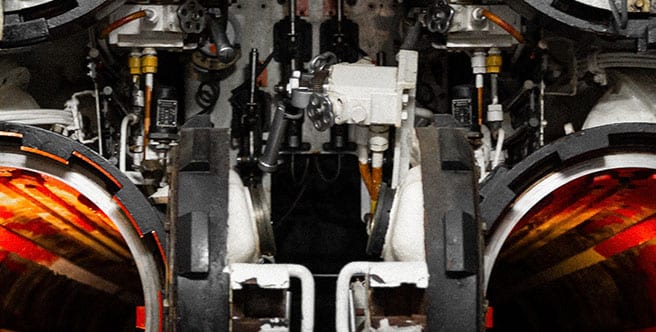Prioritize Influencer Relationships for Above-market Growth

Leveraging Influencers in the Value Chain to Increase Brand Awareness and Long-term Profitability
Building owners (and homeowners) rarely involve themselves with the selection of specific building materials or have a preferred manufacturer. As a result, they turn to various influencers― contractors, design firms, installers, builders, architects, etc.―to select suitable materials that will work with a blueprint. Unfortunately for many building materials manufacturers, this reality can leave them out of the decision-making process if they do not directly reach those influencers.
Today, the ability to differentiate requires delivery of a compelling value proposition to all stakeholders throughout the value chain. Unlike building owners or homeowners, influencers often have a preferred provider for materials, so becoming the provider of choice for this community is critical.
Relying on distributors alone to create brand preference with influencers is no longer enough. Rather, manufacturers must now control their own destinies by driving awareness and affinity to retain and expand their customer base. Leading manufacturers deploy demand generation roles focused on driving loyalty with influencer populations.
The skill set required to generate strong pull-through demand inherently differs from a traditional field seller primarily tasked with managing the channel. The “influencer development” role doesn’t generate a purchase order – rather, they secure the promise to buy. As such, the role requires a different level of measurement to determine ROI.
To craft the right strategy for influencer engagement, manufacturers must first categorize targets correctly to prioritize the coverage approach. Then, at the right cost, the optimal coverage model presents a unique opportunity not only to elevate from competitors, but also to better focus channel manager roles on the right activities. This change improves sales team productivity, customer stickiness and lifetime value, thereby growing profitability.
Identifying and Segmenting Influencers for Building Materials Products
The first step is to identify these influencers and segment them appropriately. Criteria for categorizing influencers include:
- Size – annual revenue or annual spend on relevant products
- Share of wallet – approximate level of spend for your products vs. competitors
- Growth Potential – external factors (e.g., demand for products/services or geographic real estate indicators) that correlate to above-market growth
- Geographic span – local, regional or national
- Degree of decision-making centralization – consider whether manufacturers are designated as preferred, approved, or specified and if authority for these decisions is fully centralized vs. locally decentralized
- Influencer type – thresholds for dedicated coverage will vary based on stakeholder (e.g., builder vs. installer vs. others)
Once building materials manufacturers determine the relevant criteria, they can weigh the information and develop a score for all influencers.
Using Segmentation Outputs to Determine the Correct Roles
Influencer segmentation aims to build brand awareness and positive association with the highest-impact influencers, using the correct value proposition messaging and leveraging the right sales role at an optimized cost. Typically, this influencer development role will require a lower investment per rep than a traditional field seller.
Once defined, manufacturers can then segment influencers into categories. One possible approach is to use three segments structured as follows:
Top Segment – Contains the most strategic influencers with key relationships to the business that require time, attention and in-person support. These will often align to major metropolitan statistical areas (MSAs).
Middle Segment – Important influencers that can be approached with more coverage flexibility based on their geographic location. Field coverage should be largely defined by top segment accounts and then refined based on this segment:
- Priority geos: influencers that overlap geographically with top segment influencers should be considered for field coverage, particularly when optimizing seller bandwidth/workload
- Other geos: Influencers that cannot be seamlessly covered by a top segment field resource should be managed by an influencer development role
Bottom Segment – This group includes all other influencers to be targeted by marketing campaigns rather than a dedicated resource.
Removing any expectations for influencer management off the plate of field resources who sell directly to distributors, dealers and retailers will ensure the role is sufficiently focused and aligned to the right skill sets, allowing for increased productivity expectations assigned to these sellers.
Key Considerations for Role Sizing and Deployment
Building materials manufacturers are looking for every advantage in a volatile market while still managing business partners’ needs. Preserving brand awareness by addressing the growing number of influencers is a critical strategy, but it will take time to evolve. Successful approaches include:
Start small – If this influencer development role is new to the organization, deploying this resource to the most strategic markets is a practical first step. In addition, selecting focus influencer accounts will serve as a proof of concept for the manufacturer.
Assign accounts within geographies, not just ”patches of dirt” – Identifying specific accounts within a territory for MDRs to target will help to manage workloads and apply focus to the right influencers instead of spending low-value time with bottom-tier segments.
Create a plan for inside sales role evolution – Manufacturers should identify influencers within the middle segment that would be more receptive to remote MDR support. For example, some influencers are more accustomed to communicating virtually with their vendors and have more advanced digital capabilities. Using these lower-risk influencers to start can help to build out and refine the influencer engagement process before deploying the strategy on a broader scale.
A comprehensive sales strategy for manufacturers must highlight the influencers with the most significant impact on revenue, profits and brand awareness. Developing a coverage model that connects to the right influencers with the right type of resources and collateral can help to build a long-term relationship that drives more profitable revenue growth through the existing customer base.
Customizing Your Influencer Strategy
Building materials manufacturers face unique challenges, especially during volatile economic times. Developing a customized approach to your specific market segments and sales roles throughout the entire value chain will pave the road to increased profitability.
Alexander Group has experience working with leading building manufacturers to reach influencers, build awareness and design sales role coverage programs that work. For more information on how Alexander Group can help you build out an influencer coverage model, please contact a manufacturing practice lead.


